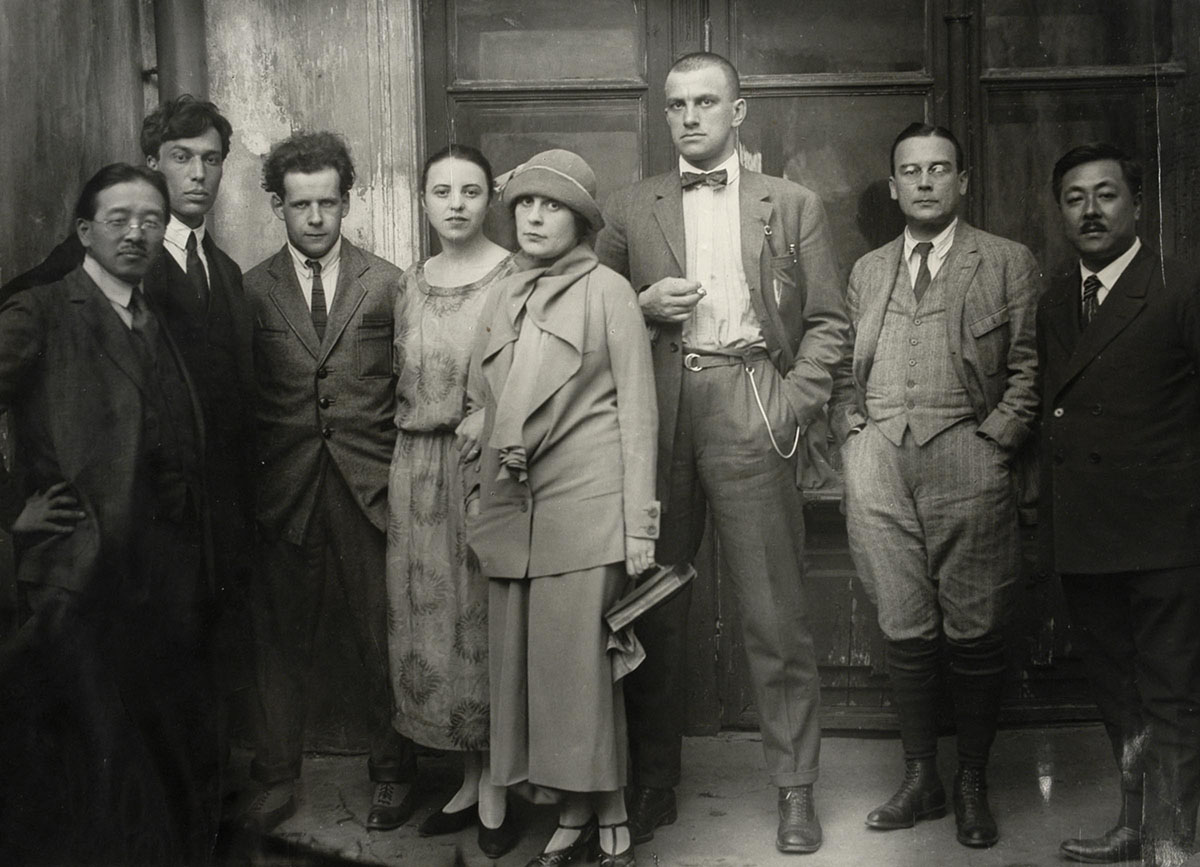 |
| Pasternak, Einsenstein, Brik, Mayakovsky |
Writers are not always alone, not as people, not even as writers. Writers, like other artists, have tended to congregate with those of a similar outlook. This is partly for company, partly for political or economic reason. They have formed groups, editorial panels, sometimes because they shared a patron, whether that patron was an individual or an isntitution or a state. Some of these groupings or associations are purely practical. The medieval guild system was intended to protect the status of its members by providing standards and apprenticeships, as was the case of a number of crafts but also of arts such as painting and sculpture before a distinction was made between craft and art.
In a visual artist’s studio there would be assistants and apprentices who might begin by providing very basic services such as cleaning the studio or grinding paint, progressing to painting the less critical parts of a major work, such as the sky. The assistants would be required to do ever more demanding parts of the painting such as vegetation or animals. The great Flemish painter Peter Paul Rubens employed other important artists such as, for example Paulus Potter, to paint dogs and horses while Rubens concentrated on the composition and the figures. All this assumed the primacy of the master and the task of others to imitate him or at least facilitate his work by filling in within the terms of the master’s style. It was only when state or royal academies took over that ideas and techniques took on a less personal direction.
But of course there had been Renaissance courts where poets, artists, philosophers, musicians and scholars gathered under wealthy patronage not so much to produce a single work but to explore areas of mutual interest, the Medici and the Sforza families in Italy being among the best known of these patrons. The idea of individual genius developed under circumstances such as these, the idea of the group being to nurture such genius in so far as it produced what was commonly agreed - but chiefly by the patron - to be valuable. So we know, for example, that Poliziano’s poems provided subject matter for Botticelli’s paintings and that Dante and Giotto would have had access to ech other’s work.
Beyond the institutional and the patronage-led there remained individuals whose ideas coincided at some stage and we know these by the terms that are generally retrospectively applied to their common vision particularly from the nineteenth century onward once monolithic patronage was pushed aside by new technologies and idea of free enterprise. So the development of capitalism in 17C Amsterdam leads artists into individual or family specialisations, looking to exploit corners of the market. From then on artists are united on the basis of new ideas and, increasingly often, on the basis of going against the market. So we have Pre-Raphaelitism, Impressionism, Neo-Impressism. Post Impressioism, Fauvism, Cubism and the rest.
For writers with less tangible products to sell the occasions for gathering would be the development of smaller salons where they could meet and discuss ideas and affairs that concerned them, on anything from ideas about nature and politics to the latest scientific theories and developments. Nevertheless we can talk perfectly sensibly of Grub Street, of the circle of Dr Johnson, of the Lake Poets, and of John Keats’s friends such as Reynolds and Leigh Hunt who set each other themes for poetry. There had been examples of collaboration in dramatic writing earlier, for example the plays of Beaumont and Fletcher, and Shakespeare’s co-writers, but the core idea of writing as the product of individual genius remained. The Imagists could congregate around a certain idea, as could Dadaists and Surrealists, and many other schools we could name but, as far as product was concerned, it was the work of the individuals within the group that achieved prominence.
Poets talk to each other, write to each other, exchange views and ideas though it is rarer to do so while engaged in the act of composition. There are projects that involve exchanges of poems; there are even collaborative cycles of poems. Octoavio Paz produced a book with the British poet Charles Tomlinson, called Airborn where one sent the other a poem, the other responded, returned the response for the first to reply with a response of his own. I myself have worked in this way with the poet Carol Watts in which we alternated poems, first reducing the lines by one each time from twenty-eight, then having got down to one line building up to twenty-eight again. The result is a forthcoming book titled, naturally enough, Fifty-Six.
The presence of the concrete Other serves as an echo and sounding board off which the pair launch themselves into new production through a continuing process.

No comments:
Post a Comment